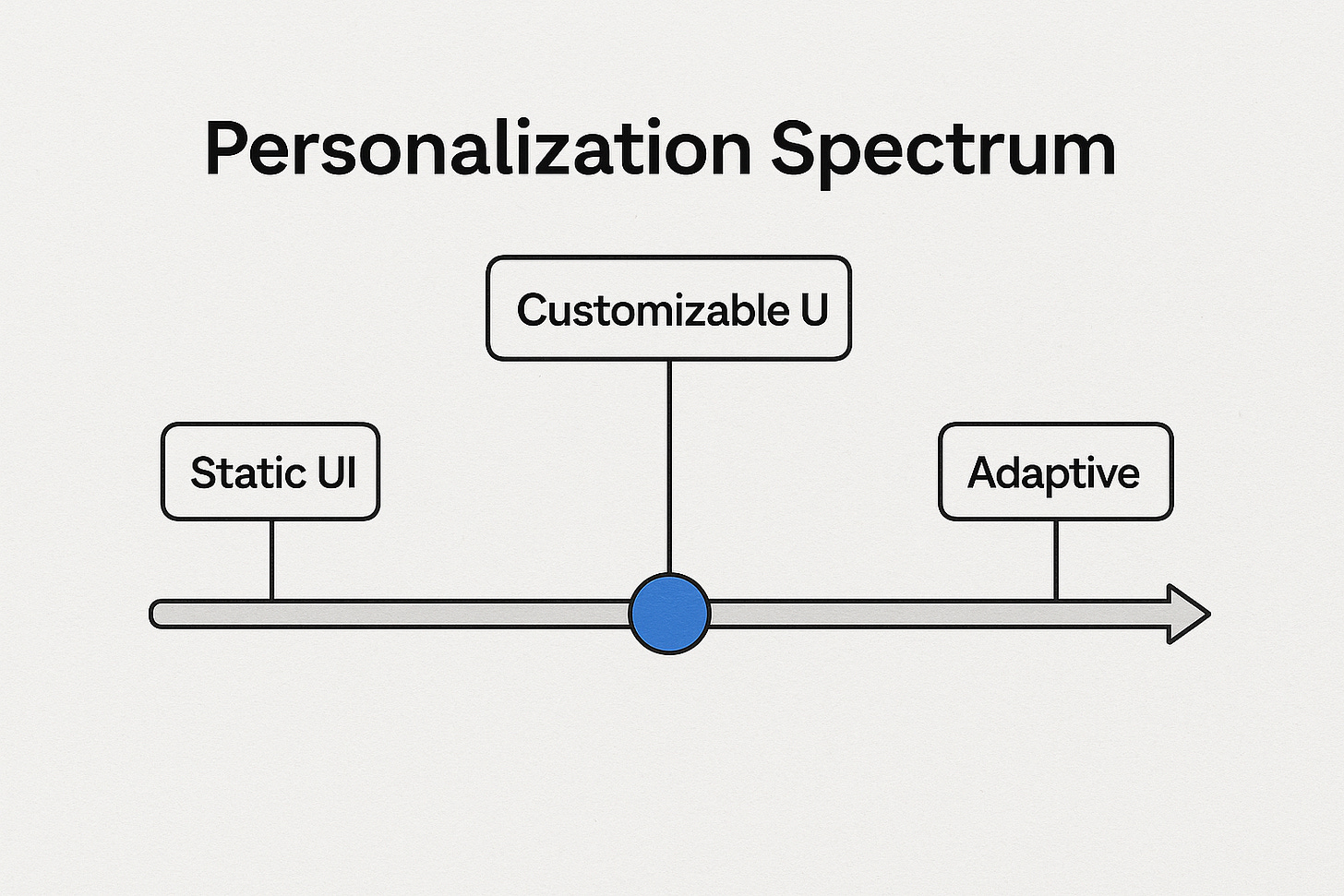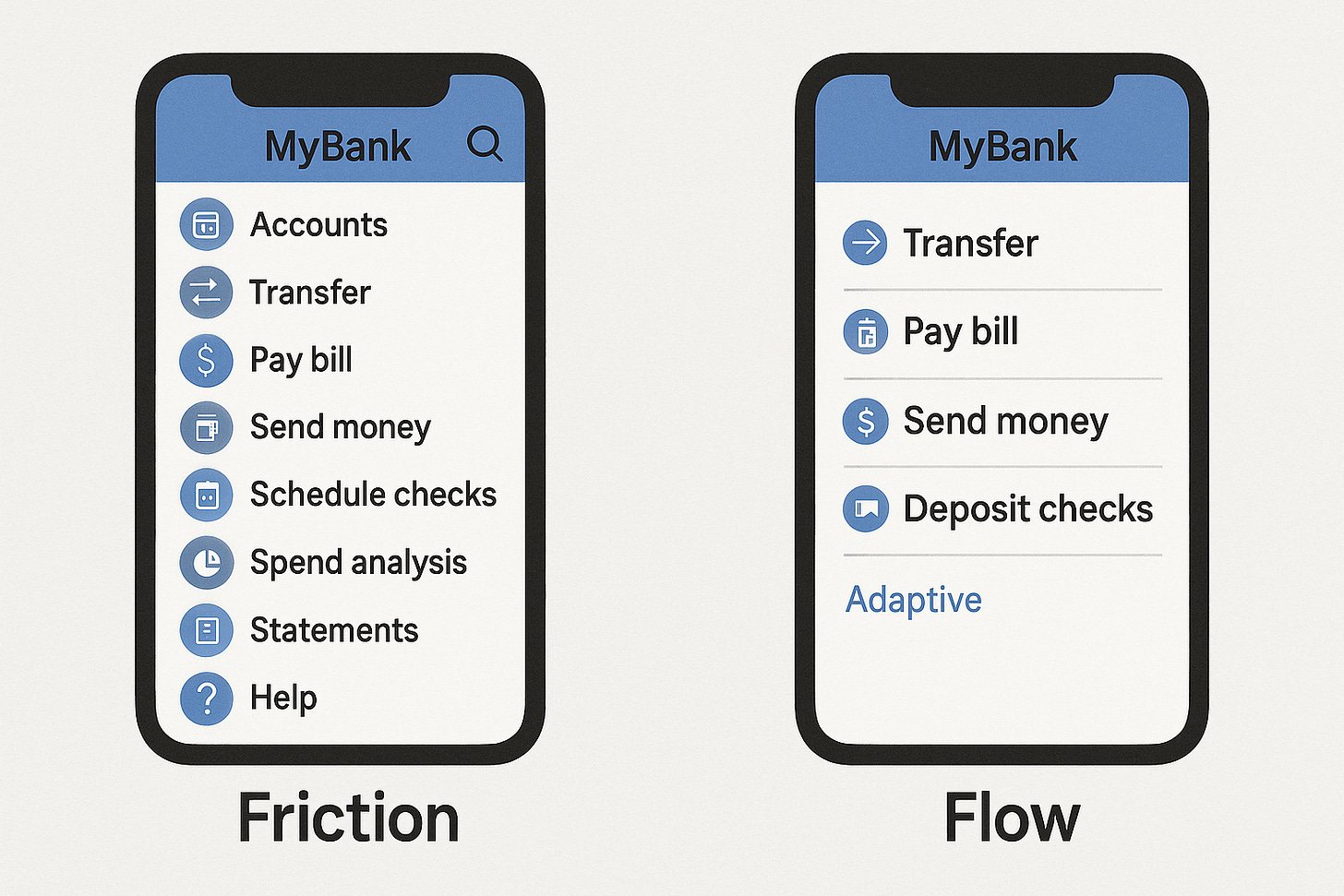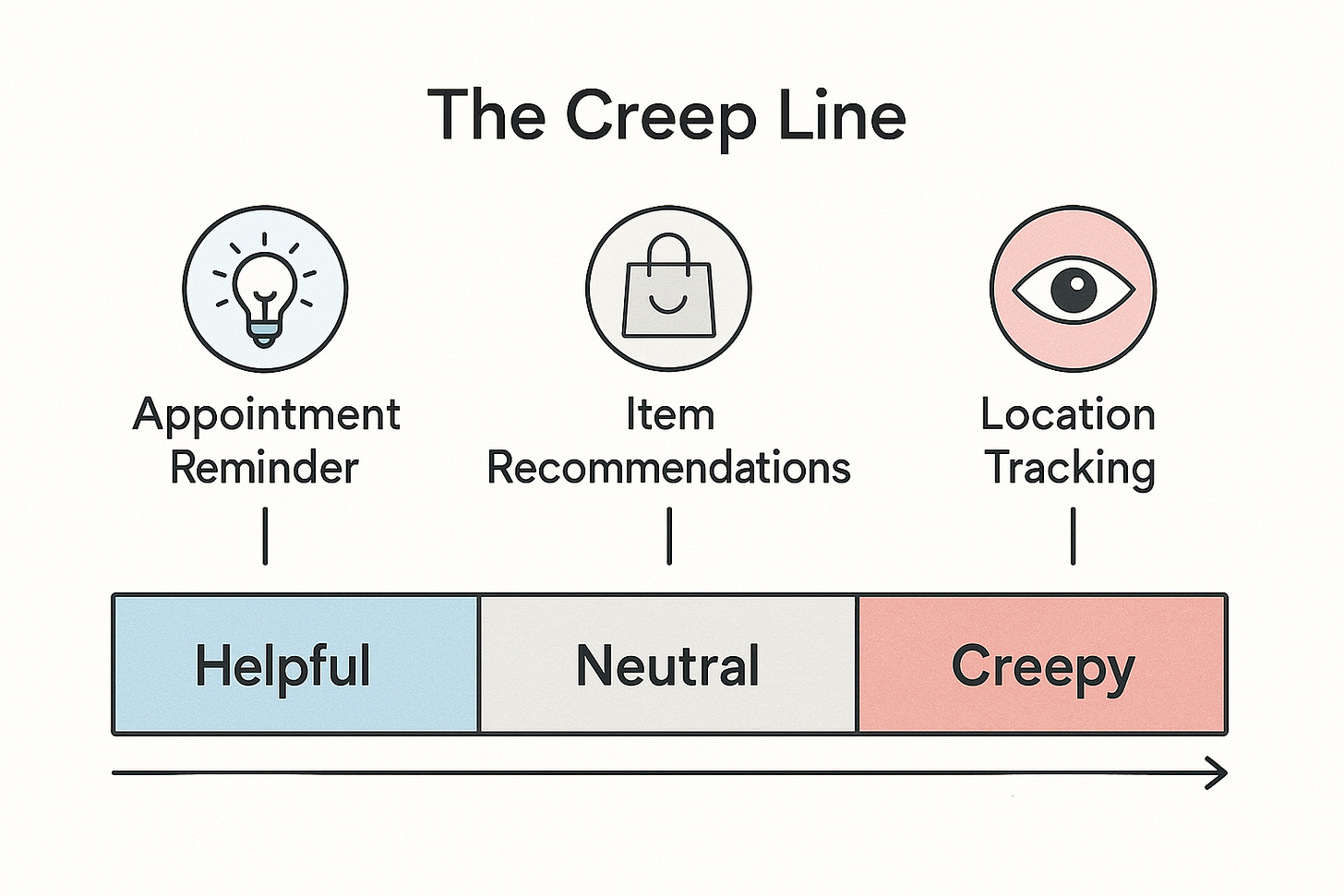Adaptive Interfaces That Learn From You
The New Personalization
Personalization is not new. We’ve seen it in recommendation engines, targeted ads, and “people like you also bought” suggestions.
What’s new is adaptive interfaces, systems that don’t just recommend, but actually change shape and behavior based on you. Think dashboards that reorganize based on your workflow, apps that anticipate the button you’ll tap next, or voice assistants that shift tone depending on your mood.
The promise: seamless, intuitive experiences that feel like they know you.
The risk: systems that overstep, misinterpret, or strip you of control.
In This Issue
What Adaptive Interfaces Are (and Why They’re Different)
The UX Benefits: Less Friction, More Flow
The Ethical Questions: Control, Privacy, Bias
User Expectations: How Much Adaptation Feels “Just Right”
Examples: Where Adaptive Interfaces Work Today
Risks of Misfire (When Personalization Becomes Creepy)
UXCON25 Spotlight: Designing for Trust in Adaptive Systems
Resource Corner
What Adaptive Interfaces Are (and Why They’re Different)
Traditional personalization = the same interface with different content.
Adaptive interfaces = the interface itself changes.
Examples:
A project management app that automatically surfaces your most-used tools at the top.
A health app that shifts daily goals based on your past week’s activity.
A news feed that changes layout depending on how quickly you scroll.
The difference is behavioral learning. Instead of you adapting to the system, the system adapts to you.
The UX Benefits: Less Friction, More Flow
Done right, adaptive interfaces can:
Reduce time-to-task by surfacing what matters most.
Lower cognitive load (no digging through menus).
Create a sense of “flow” where the product feels like an extension of your habits.
The Ethical Questions: Control, Privacy, Bias
But adaptation introduces serious ethical questions:
Control: If the system keeps changing, do users still know where things are?
Privacy: How much data collection is required to learn these patterns?
Bias: Adaptive systems may reinforce existing behavior, preventing exploration or alternative paths.
Adaptive design can quickly cross into “dark pattern” territory if users can’t see, or stop, what’s happening.
User Expectations: How Much Adaptation Feels “Just Right”
Research shows people want personalization with boundaries.
Too little: Feels generic, wastes time.
Too much: Feels creepy, manipulative, or unstable.
Just right: Predictable adaptation with clear user control.
💡 Practical principle: Always include an opt-out or reset option. Adaptive UIs should feel like assistants, not gatekeepers.
Examples: Where Adaptive Interfaces Work Today
Spotify: Auto-generates playlists but lets users override.
Google Docs: Surfaces “smart chips” as you type but never removes the old way of adding links.
Figma: Suggests commonly used components, but keeps the library intact.
These systems succeed because they adapt while preserving transparency and choice.
Risks of Misfire (When Personalization Becomes Creepy)
A shopping app rearranges menus daily → users feel lost.
A finance app adjusts budget categories without consent → users feel manipulated.
A news feed only shows what you already read → users get trapped in a bubble.
17 Days to UXCON25
In just 17 days, the doors open.
Four keynotes. Two panels. One hands-on workshop. Hundreds of conversations that won’t happen anywhere else.
This is where you’ll hear how:
✅ Kevin Liang is reframing UX roles for the future
✅ Jeremy Miller is teaching us to thrive in ambiguity
✅ Calvin Robertson is redefining leadership as practice
✅ Jen Blatz is showing how to build lasting connections
And that’s just the main stage.
Miss this, and you’ll be reading about it after the fact.
Be in the room instead.
Resource Corner
Final Thought
Adaptive interfaces are the next frontier of personalization. They can make products feel smarter, faster, and more human,, but only if they respect boundaries.
The real design challenge isn’t making systems that adapt. It’s making systems that adapt without eroding trust.






